Growing up in religious households gave both of us a natural curiosity about the many branches of faith. Our visit to Menno-Hof in Shipshewana, Indiana, promised an opportunity to learn more about the Mennonites, Amish, and Hutterites. While these communities live lives distinctly different from our own, we wanted to understand their origins, beliefs, and daily practices from a place of respect. The Menno-Hof experience offered us more than just a museum visit—it was a step into another worldview, told by those who live it. From the moment we arrived, we could sense the sincerity in how history and faith were shared. This wasn’t about converting anyone; it was about preserving and explaining a way of life. With each exhibit, we found ourselves connecting dots between the past and the present, realizing that at the heart of every belief system lies the universal desire for meaning and belonging.
We want to thank Visit Shipshewana for hosting our visit. Rest assured, all photos and opinions are our own.
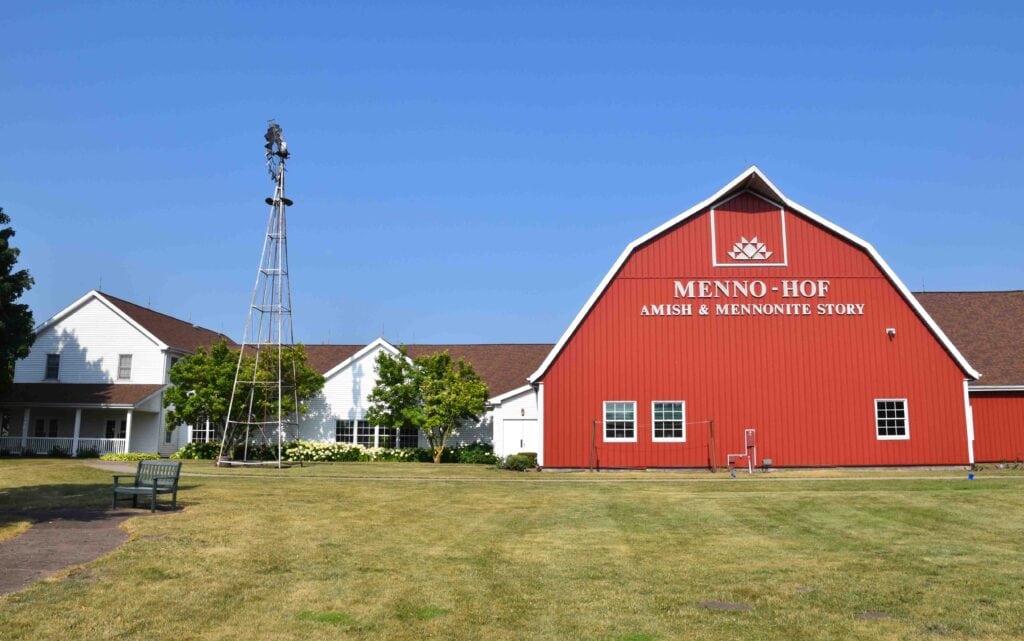
Menno-Hof Museum: A Place of Welcome
Menno-Hof sits in the heart of Shipshewana, a town known for its strong Amish and Mennonite presence. The building’s warm wooden beams and welcoming architecture immediately set a tone of hospitality. Inside, the museum takes visitors on a journey spanning centuries, tracing the story of Anabaptist groups from their European beginnings to life in the Midwest today. Guided by thoughtfully curated displays and multimedia presentations, we quickly learned that Menno-Hof is more than just a history lesson—it’s a cultural bridge. The goal here is understanding, not persuasion, and that respect is woven into every exhibit. As we moved from room to room, each space seemed designed to invite quiet reflection, whether you were reading about ancient church debates or listening to the voices of modern-day community members. It felt less like visiting a museum and more like sitting down with an old friend who has much to share.
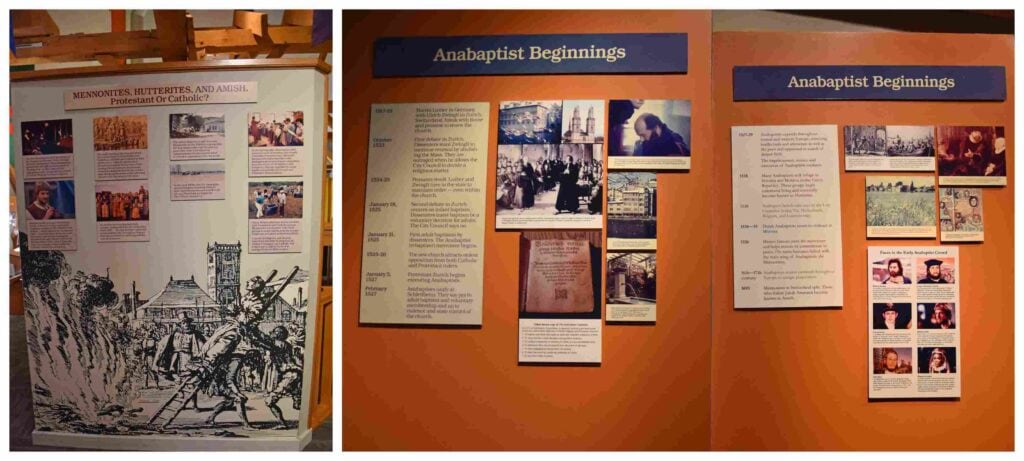
The Anabaptist Beginnings
For those unfamiliar, the Mennonites, Amish, and Hutterites trace their roots to the Anabaptist movement, which emerged in Europe during the early 1500s. The term “Anabaptist” means “re-baptizer,” a reference to their belief that baptism should be reserved for adults who can consciously choose their faith. This was a radical departure from the widely accepted practice of infant baptism at the time. This sparked both theological and political tensions. At Menno-Hof, the story unfolds through multimedia exhibits that outline the theological principles that set them apart. We learned how these groups emphasized simple living, community accountability, and a deep commitment to following the teachings of Jesus in daily life. Hearing about their determination, we began to appreciate how faith can serve as both a spiritual compass and a cultural identity, passed down through generations despite significant challenges.
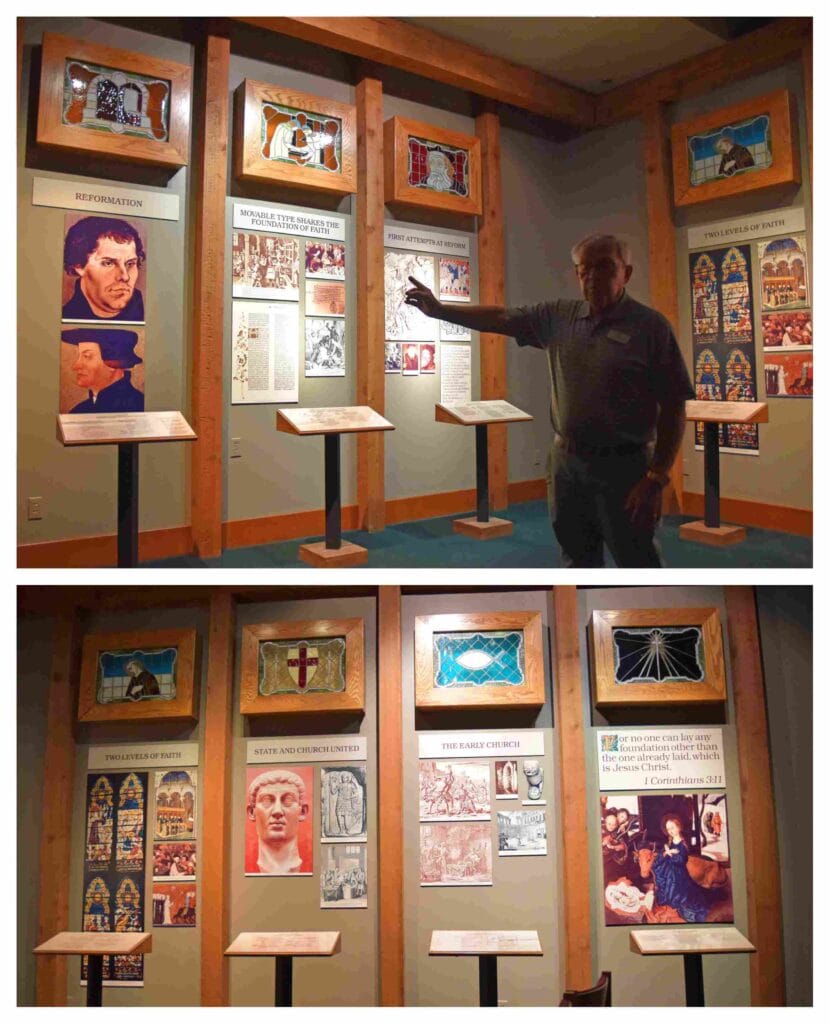
Reformation and the Early Church
The Anabaptist movement was born out of the larger Protestant Reformation, a period when many questioned the authority and practices of the established church. Menno-Hof’s exhibits bring this turbulent time to life with visuals of crowded town squares, the stories of debates, and written proclamations from both sides. Reformers sought to return Christianity to what they saw as its biblical roots, challenging centuries-old traditions. The Anabaptists, however, went further than most, advocating for the separation of church and state and insisting on voluntary church membership. These beliefs placed them at odds not just with the Catholic Church, but also with many Protestant leaders. Listening to their stories, we could almost feel the tension of the era. It involved voices clashing, ideologies colliding, and everyday people deciding where they stood in a rapidly changing spiritual landscape. It was a reminder that faith often evolves in the crucible of conflict.
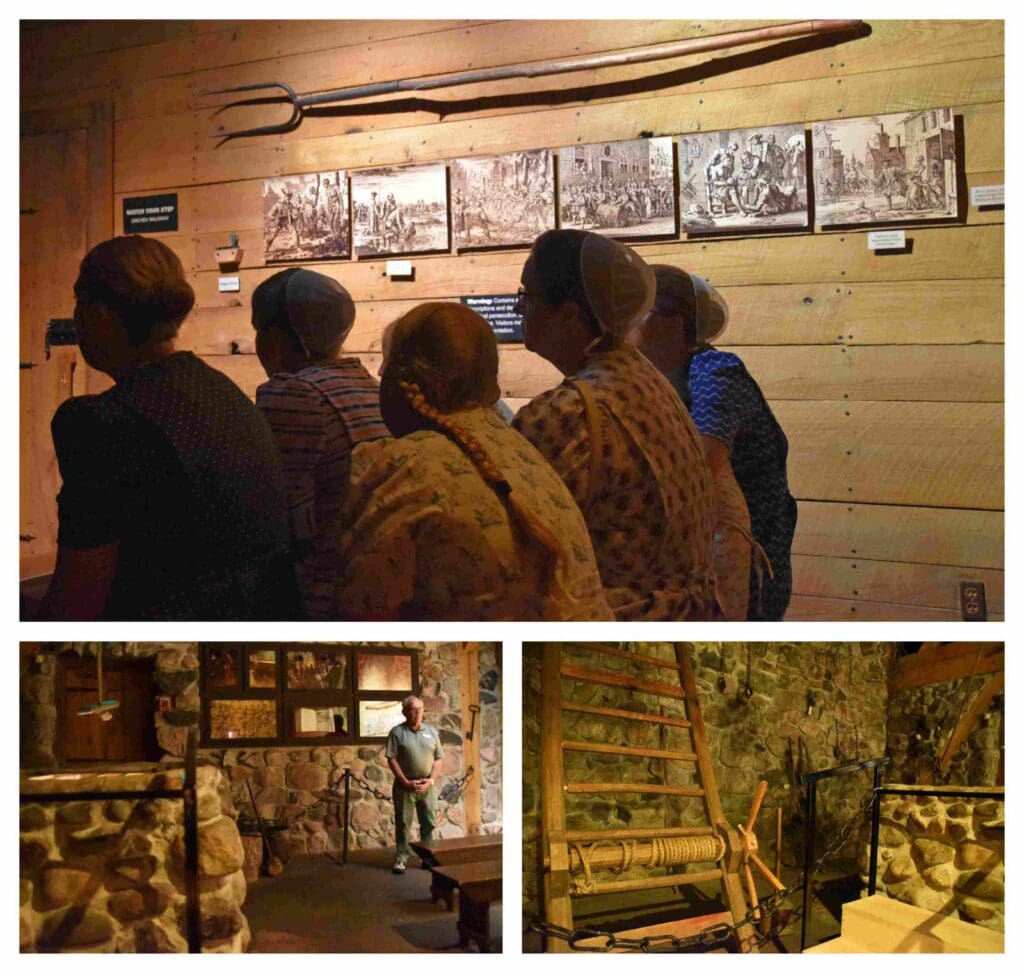
Persecution in Europe
The Anabaptists’ radical ideas came at a steep price. Across Europe, they faced imprisonment, torture, and execution for defying religious authorities. Menno-Hof Museum does not shy away from depicting this grim chapter of history. Stark imagery and solemn narrations tell of families torn apart, believers hiding in forests, and congregations meeting in secret. What struck us most was the resilience of those who held to their convictions despite knowing the risks. The persecution wasn’t limited to one nation—laws against Anabaptists were enacted across the continent. Yet, their communities endured, bound together by faith and mutual support. Sitting in a recreated dungeon exhibit, we imagined the fear and courage it must have taken to remain steadfast. It was a sobering moment, reminding us that religious freedom, something we often take for granted today, was once won at unimaginable personal cost for those who believed differently.
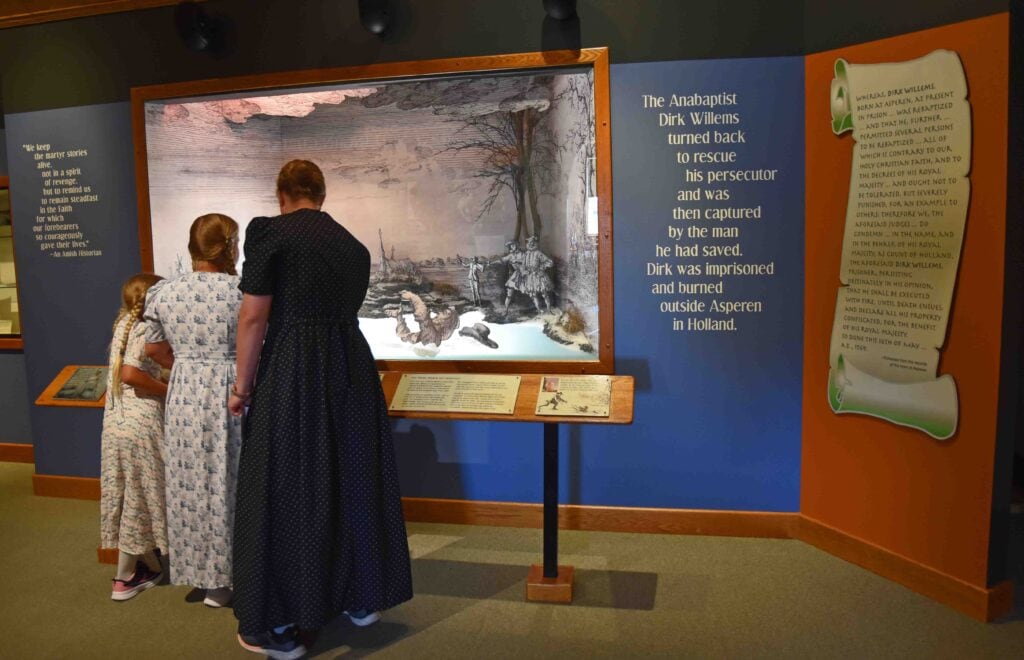
The Story of Dirk Willems
One of the most poignant moments of our visit came in learning the story of Dirk Willems, a Dutch Anabaptist imprisoned for his faith. In vivid detail, Menno-Hof Museum recounts how Willems escaped across a frozen pond, only to hear the cries of his pursuing guard who had fallen through the ice. Turning back, Willems pulled the man to safety—an act of compassion that led to his immediate recapture. Soon after, he was executed. Standing before the display, we felt the emotional weight of his choice. The scene was depicted not as a romanticized legend, but as a real, human moment. One man living out his beliefs, even when it cost him his life. It’s the kind of story that stays with you, not because of the tragedy, but because it shows the power of conviction tempered with mercy, even in the face of injustice.
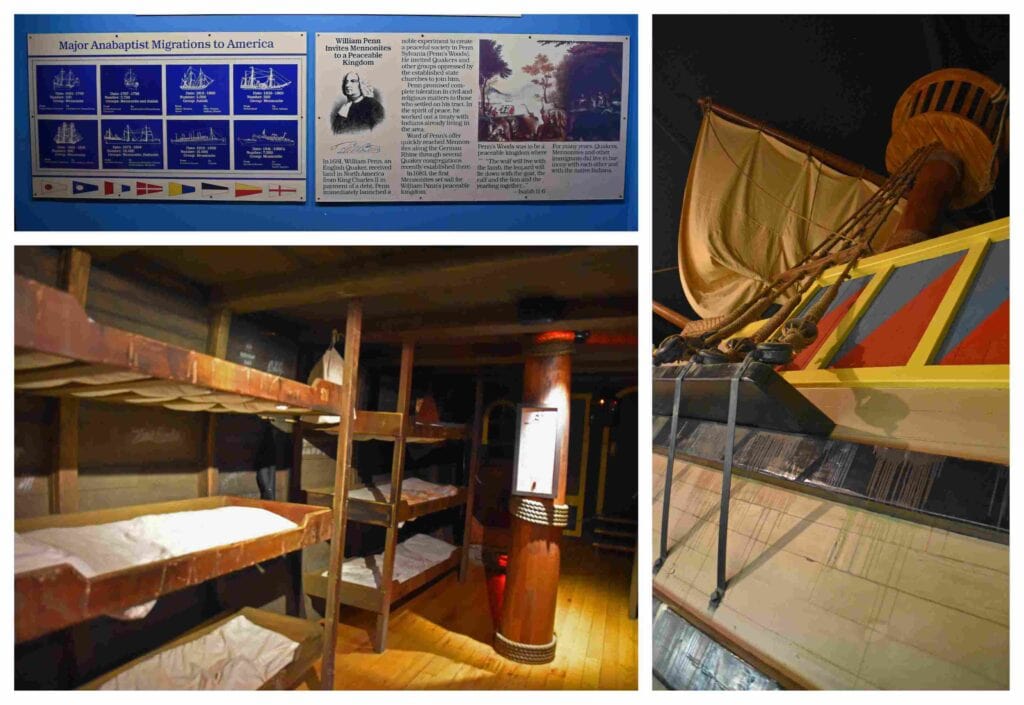
Seeking Freedom in North America
By the 17th and 18th centuries, many Anabaptists saw no future for themselves in Europe. Persecution, economic hardship, and the desire for a place to live out their faith without interference drove them to seek new lands. Ships bound for North America offered both risk and hope. At Menno-Hof Museum, we boarded a ship that recreates what reality would have been for those seeking a new life. Life in the New World wasn’t without challenges—harsh winters, unfamiliar terrain, and cultural differences tested their resolve. But here, they found the possibility of religious freedom that had eluded them for centuries. Their migration stories reminded us of countless others who have crossed oceans in search of safety, opportunity, and the chance to live according to their beliefs. It’s a story as relevant today as it was hundreds of years ago.
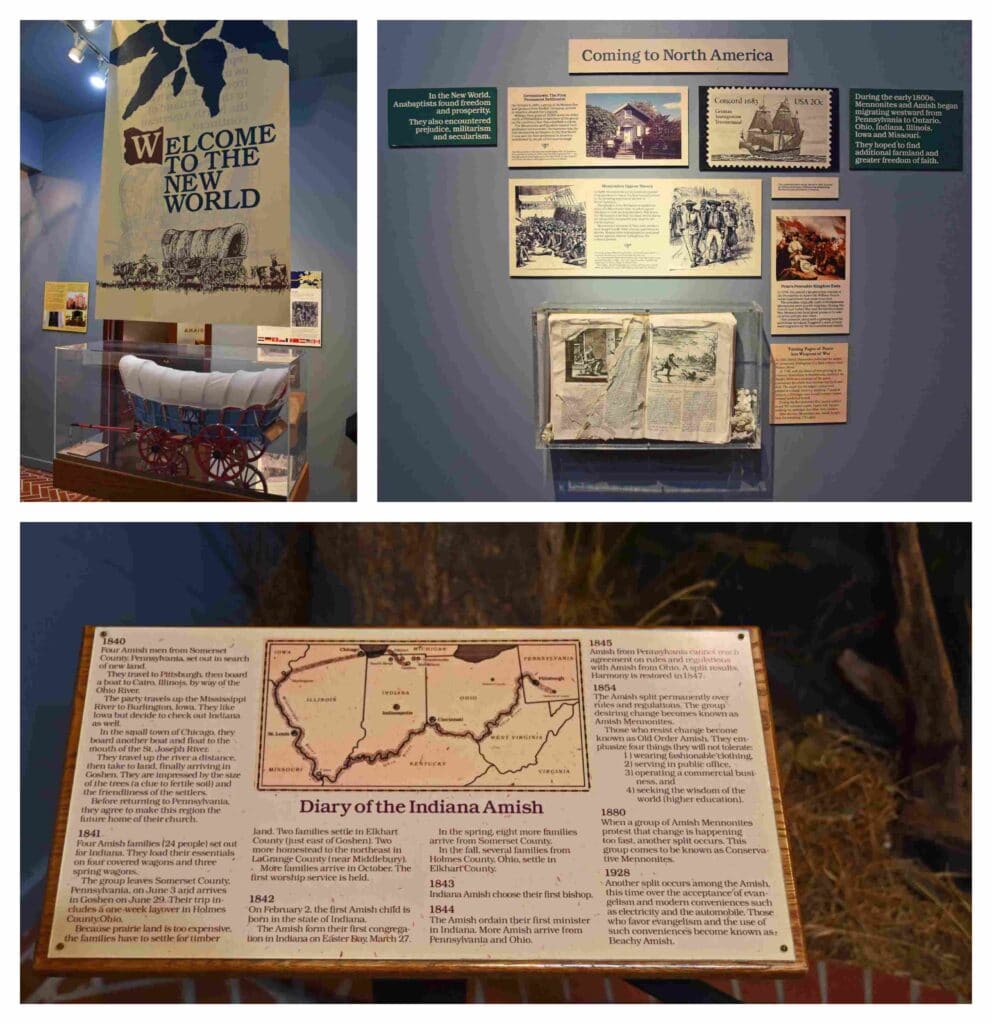
Indiana and Today’s Coexistence
Today, Mennonites, Amish, and Hutterites live alongside other residents of Indiana in a balance of tradition and modernity. Shipshewana, with its bustling markets and quiet farmlands, is a place where these communities contribute to the region’s identity while preserving their own. At Menno-Hof Museum, we learned how cooperation extends beyond the church—neighbors help each other with harvests, businesses thrive through mutual respect, and cultural differences are met with curiosity rather than conflict. As we left, we reflected on the fact that understanding often begins with listening. Menno-Hof had given us the gift of perspective, and in doing so, reminded us that every belief system has a story worth hearing. If this journey has inspired you, we’d be honored if you shared this article so others might learn from it too.


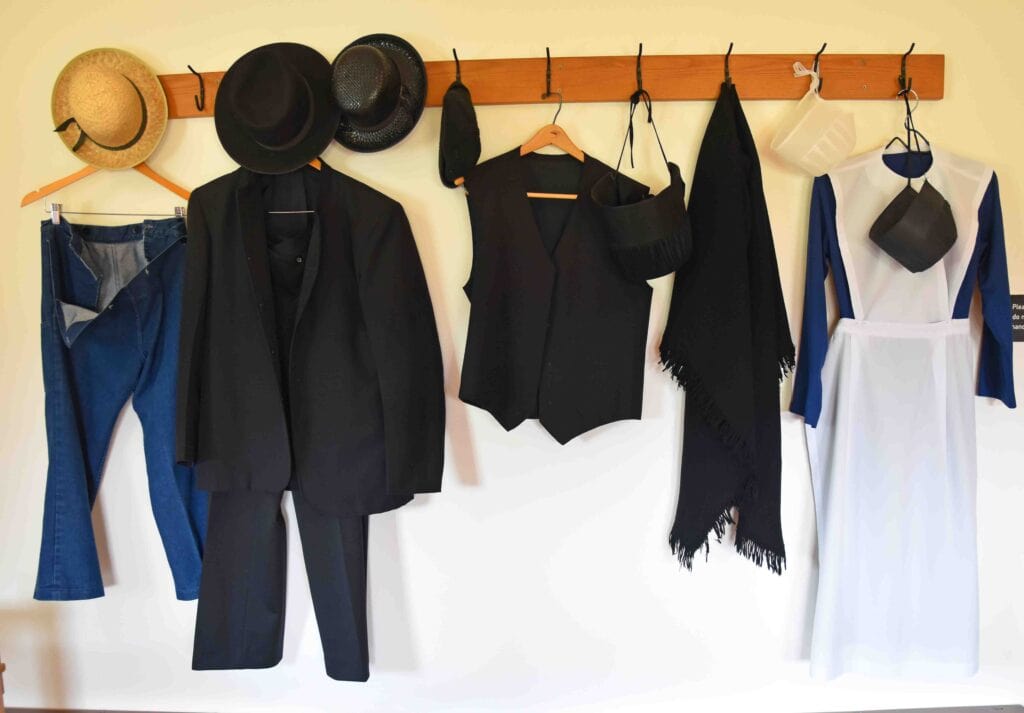



We stopped at Menno-Hof on our way through Indiana and were blown away by how much we learned. Such a hidden gem.
So glad you enjoyed it! Menno-Hof really does shine a light on the rich heritage of the Amish and Mennonite communities. It’s the kind of place that leaves a lasting impression.
I’ve always been curious about Amish and Mennonite history. Do you think the museum is good for someone with no background knowledge?
Absolutely! Menno-Hof is designed to be welcoming for everyone, no matter how much (or how little) you know going in. The exhibits do a wonderful job of bringing the stories to life in an easy-to-follow way.
I’ve visited once, but I think I could go back again and still learn something new.
You’re exactly right! There’s so much detail tucked into the exhibits that every visit reveals something different. That’s part of what makes Menno-Hof so special.
Our kids loved the multimedia exhibits, especially the barn-raising scene. It made history feel real for them.
That’s fantastic to hear! The barn-raising is such a favorite—interactive and memorable. It’s one of those museum experiences that speaks to all ages.
We’re planning a trip to Shipshewana—would you recommend adding Menno-Hof to our itinerary?
Definitely! Menno-Hof is right in the heart of Shipshewana, and it pairs perfectly with exploring the town. It adds depth and context to the whole experience.
Do they still have the guided tours, or is everything self-paced now?
Great question! Menno-Hof offers both. You can explore at your own pace, or join a guided tour if you’d like a deeper dive into the stories and history. Either way, it’s a rewarding visit.